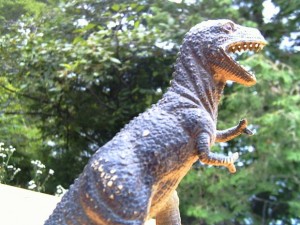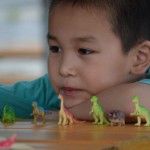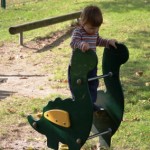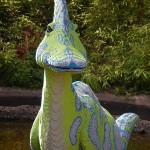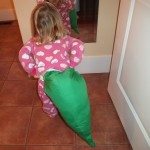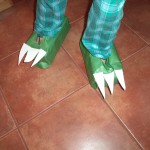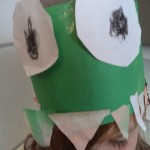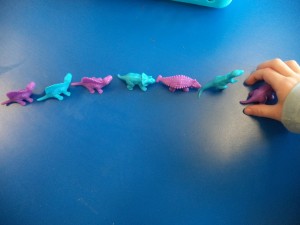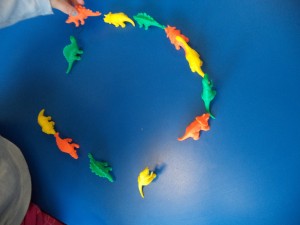Puzzles are more than toys. They are a great opportunity for kids to develop critical thinking skills. Combine two kinds of fun with dinosaur puzzles.
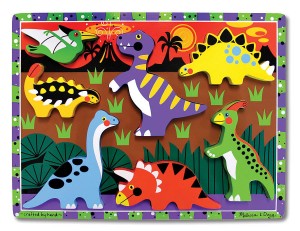 There’s a tremendous range of dinosaur puzzles, from wooden or sponge ones with only a few big, chunky dinos that fit in precut spaces all the way to big floor puzzles with 100 or more pieces. Some dinosaur puzzles will have the alphabet or numbers printed on the pieces too.
There’s a tremendous range of dinosaur puzzles, from wooden or sponge ones with only a few big, chunky dinos that fit in precut spaces all the way to big floor puzzles with 100 or more pieces. Some dinosaur puzzles will have the alphabet or numbers printed on the pieces too.
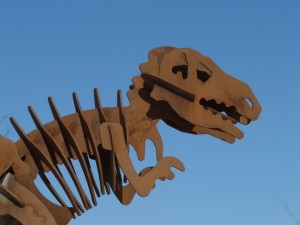 Practically any kind of dinosaur has a model of wooden bones to put together like a small version of real skeletons in museums. Few pieces or many, brightly colored or plain, 3-d or flat, there are dinosaur puzzles that will appeal to kids of various ages and stages.
Practically any kind of dinosaur has a model of wooden bones to put together like a small version of real skeletons in museums. Few pieces or many, brightly colored or plain, 3-d or flat, there are dinosaur puzzles that will appeal to kids of various ages and stages.
Kids will play with puzzles in different ways and use different strategies to put them together. As they do, here are a few of the ways that puzzles build brain connections:
- problem-solving: Figuring out what fits where is a problem to be solved. Kids will use different strategies to find these solutions.
- noticing details: Puzzles have numerous details such as color and size, as well as different shapes. All of these give clues as to where pieces go.
- spatial skills: Both brains and hands match the shape of a piece to the shape of empty spaces. Visualizing and being able to manipulate pieces mentally is a critical skill for later learning.
- memory: Puzzles can be done over and over. Kids will stretch their memories as they remember where pieces go, what the puzzle looks like when it’s all done, and how they figured it out previously. They may remember asking for help and earlier answers.
- muscle development. At this age, the small muscles in the hand, wrist, and arm, are still developing. Kids need many opportunities to build muscle strength.
- hand-eye coordination: Perhaps a better term for this is hand-eye and brain coordination. Getting a piece to fit in a space requires they all work together.
- attention, concentration, and persistence: Completing a puzzle can be done in small chunks of time or all at once. Kids can look around or even go off and do something else, but the only way to finish it, is to spend time and effort doing it.
- creativity: There are a variety of ways to do puzzles. Even the ones with precut spaces can be done in various ways.
- satisfaction, confidence, and achievement: Putting the last puzzle piece in is quite an achievement. No wonder it can feel so satisfying and boosts children’s confidence in their abilities.
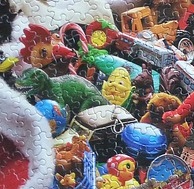 Puzzles can also enhance social and emotional skills. Sometimes kids will ask for help and sometimes they will be very independent. They will become frustrated and have to handle their emotions. Showing a puzzle that is all done and telling about it builds people connections. In a way, a puzzle is a metaphor for life. Aren’t we all putting the pieces together each day?
Puzzles can also enhance social and emotional skills. Sometimes kids will ask for help and sometimes they will be very independent. They will become frustrated and have to handle their emotions. Showing a puzzle that is all done and telling about it builds people connections. In a way, a puzzle is a metaphor for life. Aren’t we all putting the pieces together each day?
P.S. If play and early learning is a puzzle for you, visit often for a play-of-the-day post everyday.

